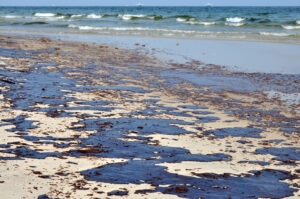
Over the last 35 years, Jeff Anderson has worked in most industries in the non-destructive testing business. Throughout the years, his roles have changed. When he first began his career, he started as an electrical engineer. After fifteen years, however, he transitioned from designing transducers to marketing them. He has dealt with applications, both through managing their development and leading their design. He has seen applications through varying perspectives.
In 2010, the largest offshore oil spill in marine history occurred along the Gulf of Mexico. For 87 days, oil leaked from underwater pipes at the Deepwater Horizon Oil Spill. The concrete core sealing the oil well had cracked and the blowout preventer installed to prevent oil from gushing into the ocean malfunctioned. For over two months, oil spilled into the gulf.
The economic and ecological costs were devastating. Millions of gallons of oil spilled into marine habitats polluting the water and killing thousands of animals. With every day that passed, businesses lost more money, and more animals died.
Before he was the general manager at SNI, Jeff played a critical role in developing a transducer to scan the cracked pipe that caused the Deepwater Horizon Oil Spill. Everyone knew the pipe needed to be sealed, but the question became: How? Before they could seal it, measurements gauging the thickness of the pipe’s walls needed to be taken. If the pipe were sealed in a region where the walls were too thin, it could have resulted in the rupturing of another region – heightening the problem.
Designing and building a transducer that could measure the wall thickness proved challenging. It is unusual for a transducer to be at these water depths. Because of the depth of the pipe, the transducer had to be waterproof and able to withstand extreme and varying pressures. After the transducer was built, it was attached to underwater submarines and sent to successfully inspect the pipe.
Although the ecological and economic effects of the spill are still being observed, if it were not for the work of men like Jeff, the results could have been even more devastating.




